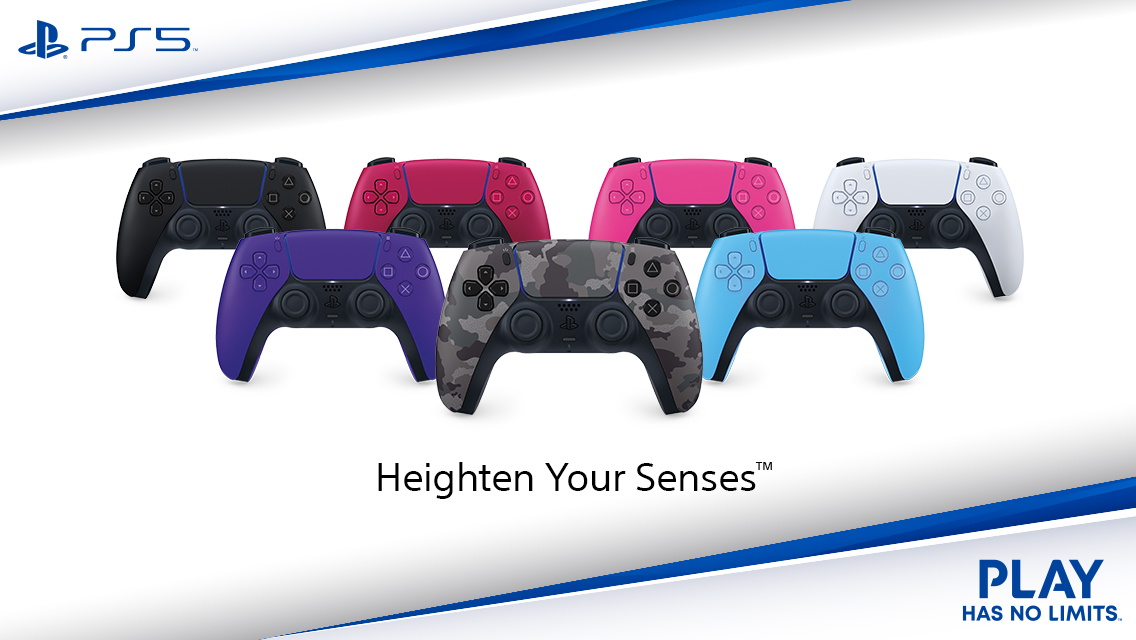Long before gamers argued over the internet about whether the most powerful console around has “PlayStation” or “Xbox” in its name, schoolyard battles were waged between those who pledged their allegiance to Sega or Nintendo. When it came time for the 16-bit era, my loyalty was squarely with the Genesis, and nothing the Super NES could offer would change my mind. The one thing we were really missing on the Genesis, though, was a proper mascot—and then Sonic the Hedgehog came along. Years prior to him spawning a number of terrible games (and questionable fandom circles), Sonic was daring, he was fast, and he was way cooler than that mushroom-eating plumber guy. Unfortunately, those terrible games were indeed looming like dark clouds on the horizon, and once Sonic’s 16-bit glory days were over, so too was most of my love for him and his adventures.
While he’s gotten a handful of “not bad” games over the years, Sonic has longed for—and, more importantly, deserved—a return to form. While I don’t mean to personally insult all of the fine people working for the developer, I don’t think Sega has much of a clue as to what to do with the most popular and influential franchise they’ve ever created, and even their attempt to revive Sonic’s origins in Sonic the Hedgehog 4 was an awkward mess that just helped prove that point. When Sega once against promised last year that they’d be “going back” to Sonic’s roots for the latest game in the franchise, it seemed like yet another chance to let us down.
This time, however, would be different.
Handing the fate of your property over to fans is an utterly terrible idea in most cases when it comes to entertainment, but Christian Whitehead is no ordinary fan. Christian—otherwise known as The Taxman—was a creator of Sonic fangames who then created the Retro Engine, a platform upon which past Sonic games could be re-created with additional features, proper widescreen support, and more. Using the Retro Engine, Christian worked with Sega to re-release Sonic CD, Sonic the Hedgehog, and Sonic the Hedgehog 2 on various platforms—eventually leading Sega to then entrust Christian, along with developers Headcannon (who have their own history with Sonic) and PagodaWest Games, to work on a new project called Sonic Mania.
It’s important that you at least understand some of the details in what lead up to Sonic Mania’s existence, because it helps explain just how daring of a release this is. While Sega isn’t pinning Sonic’s entire near-future on a game created to be an overload of retro nostalgia—that’ll be the job of the more mainstream Sonic Forces when it hits later this year—it’s still shocking to see something like this be an official, canonical part of the series.
Sonic Mania exists to satisfy two questions: what could a team who cares passionately about the Sonic of yesteryear put together in the modern era, and what would Sonic the Hedgehog have been like had it continued on in 2D on the Sega Saturn? (Anyone saying this would’ve been a Genesis game doesn’t actually remember what the Genesis hardware was capable of.) The answer to both is a game that looks, feels, and plays like the 16-bit Sonic titles—just a little bit tighter in the controls, a little more precise, a little more polished. Jumping into Sonic Mania was like riding a bicycle; I haven’t played any of the 2D releases in years, and yet it felt like I’d never stopped playing moments after picking up the controller.
Part of that has to do with the fact that Sonic Mania is about bringing together a variety of elements from the 16-bit Sonic games and mixing them with new ideas, and that’s definitely true of its gameplay. New additions like the drop dash (which lets you go rolling off at high speed the moment you hit the ground) blend together seamlessly with returning power-ups like Sonic 3’s elemental shields (which now offer additional environmental functions) and Knuckles’ Chaotix’s Combine Ring. The result is a game that truly feels like what it’s supposed to be: the combining of years of gameplay into something that now stands as probably the best-playing Sonic game to date.
Of course, a good Sonic game is nothing without great worlds in which to make use of all of his abilities, and here Sonic Mania especially shines. Eight previously-seen stages arrive together with four completely new ones, but all of those that are returning—from Sonic the Hedgehog’s Green Hill Zone to Sonic 2’s Oil Ocean Zone—have seen some massive reworking or remixing. I know that many of us have been through Green Hill countless times at this point, but it can be hard to appreciate through words alone just how expanded it (and its counterparts) now are. Reminding me at times of Sonic CD’s zones, Sonic Mania’s stages now stretch far higher and lower than before, and routes that you once had memorized may lead to completely new challenges or dangers this time around. The biggest concern, really, was the newly-created stages, because it can be easy for those coming from the fan side to think they know what makes good Sonic stage design but hard to have their creations live up to the official classics. Honestly, most of Sonic Mania’s original stages were some of my favorites in the game, to the point that I wouldn’t have minded seeing a wholly original adventure instead. Thankfully, both in the new and the reworked old, there was a great sense of momentum all throughout, giving players the chance to slow down and explore when they felt like it, or speed up and go tearing through the terrain to satisfy the need for speed. Only two of the game’s 12 stages felt weak to me: the newly-created final area that’s based around an obnoxious concept, and a certain Sonic & Knuckles inclusion that feels weirdly weak in design. Neither of them come close to ruining the game, but both were low enough points for me to noticeably stand out from the rest of the game’s high level. In one other smaller point of uneven quality, some stages have really cool transitions to explain how you’re getting from one area to the next when they previous had no direct connection. Others, however, are notably missing such cutscenes—making me wonder if they were simply unfinished and could perhaps come later.
Probably my favorite part of playing through Sonic Mania’s various zones is something that can be said about the entire game: a heightened level of creativity. All stages are split into two acts, but the difference between those two halves can be surprising at times. As you transition from Act 1 to Act 2—which happens seamlessly without any break in the game—the visuals change, the music is altered, and new gimmicks (in a good way) or gameplay components are introduced that didn’t exist in the stage’s first half. A wide variety of concepts have been crafted simply to be used during only one particular act, which seems crazy and kind of wasteful, but which also makes playing Sonic Mania so much more enjoyable than its sources of inspiration. Seriously, it’s going to be hard for me to go back to past Sonic games at this point and return to that sense of apathy that can set in when you feel like you’re just running through the same section of world for a second (or third) time.
That creativity on display throughout the game’s various zones is often just so completely refreshing and wonderful, and it also includes the game’s wide variety of new bosses. Some of them are a little under-utilized, some a bit too easy, but others are exactly what they needed to be—with one in particular coming in as possibly the most awesome boss encounter ever in a Sonic game.
We also really need to talk about the game’s soundtrack, which is completely fantastic and fitting—and somehow feeling nostalgic and totally fresh both at the same time. Music has always added a lot to the Sonic games, and that’s still true here, especially in the way the tracks change and expand along with the Acts.
It’s hard not to just continue gushing about how much care and effort went into Sonic Mania, because that’s part of what makes it so great. I know the term “love letter” is somewhat overused at this point when it comes to video game reviews, but it’s nearly impossible not to have that phrase pop into your head while playing. This is a game that was built by fans who care about Sonic for fans who care about Sonic, and this crazy project that Sega somehow approved for development ended up being far more successful than any of us could have imagined.
There were moments when I took what I was playing for granted because my brain couldn’t see this as anything but the next logical continuation of the Sonic series. It was almost as if no time had passed between the 16-bit era and today, and that’s a testament to how “true” of a Sonic game the team was able to put together here. Had this felt like a sloppy nostalgia cash-in or well-meaning-but-poorly-executed fan project, Sonic Mania could have ended up as another misguided attempt by Sega to find a place in the world for their beloved blue mascot. Instead, this is Sonic as sure of who he is and what he wants to be as he’s been in countless years, and is what people like me once fell in love with in its purest, most genuine, and most honest form.
|
★★★★☆
Sega took a chance in letting a longtime Sonic fan and a few smaller dev teams bring the original 16-bit iteration of their mascot back into the modern era, and the result is Sonic Mania, one of the purest and most enjoyable Sonic games we’ve ever been given. The question isn’t if this experiment in reviving classic Sonic was successful or not—the question is what happens next. |
Developer Christian Whitehead, Headcannon, PagodaWest Games Publisher Sega ESRB E - Everyone Release Date 08.15.17 |
| is available on Xbox One, PlayStation 4, Nintendo Switch, and PC. Primary version played was for PS4. Product was provided by Sega for the benefit of this coverage. EGM reviews on a scale of one to five stars. | |

Mollie got her start in games media via the crazy world of gaming fanzines, and now works at EGM with the goal of covering all of the weird Japanese and niche releases that nobody else on staff cares about. She’s active in the gaming community on a personal level, and an outspoken voice on topics such as equality in gaming, consumer rights, and good UI. Check her out on Twitter and Mastodon.





